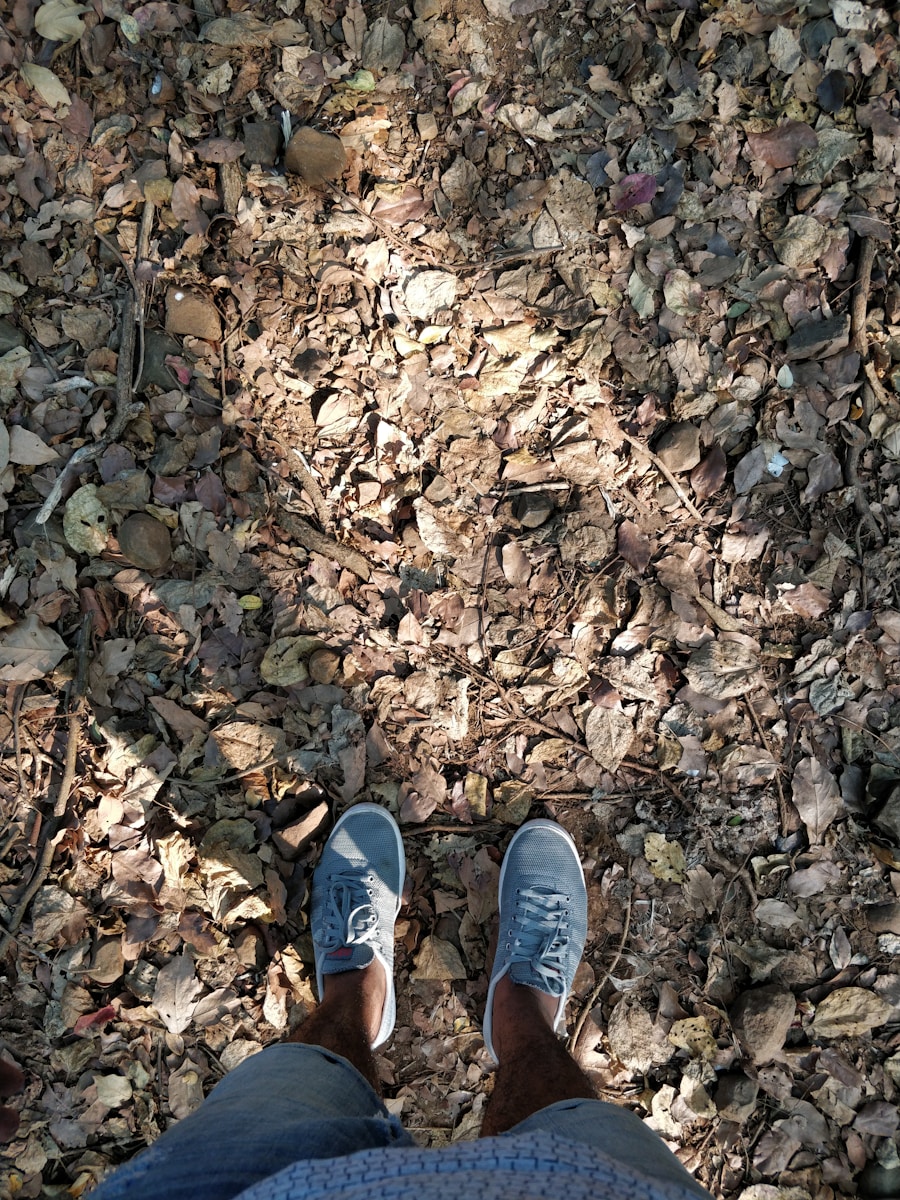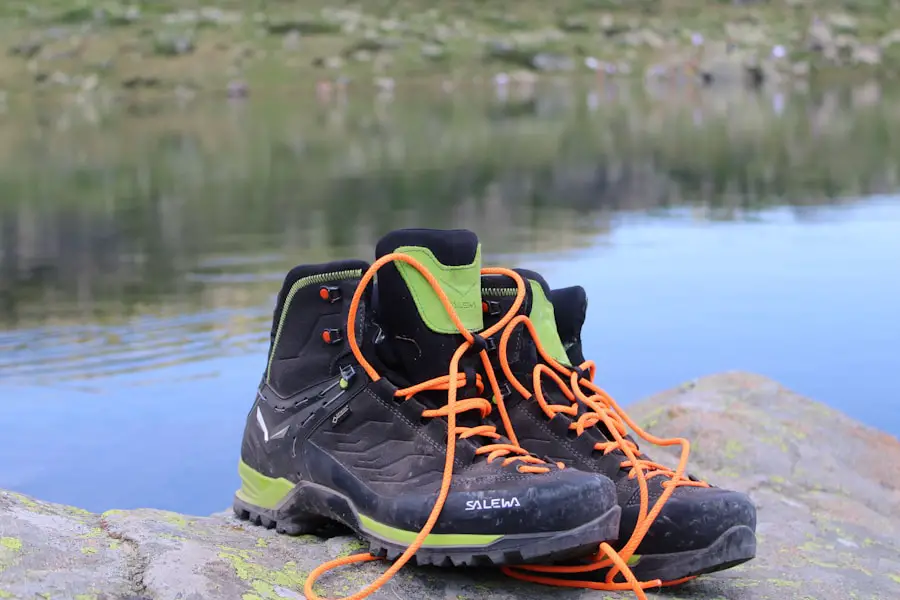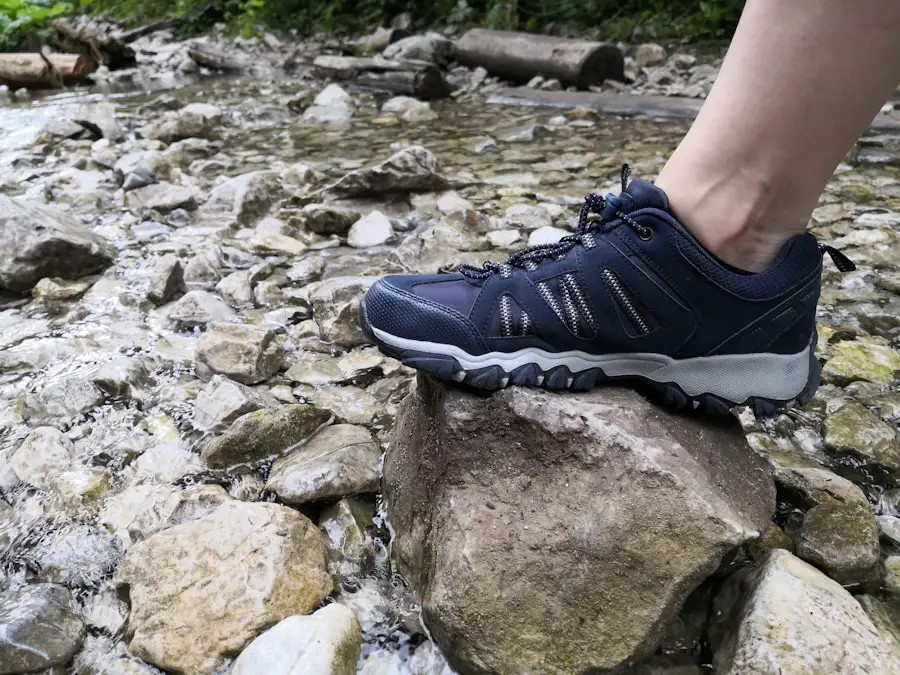Selecting the appropriate hiking shoes is a critical decision for anyone who enjoys exploring the great outdoors. The right footwear can significantly enhance your hiking experience, providing comfort, support, and protection against the various terrains you may encounter. Poorly chosen shoes can lead to discomfort, blisters, and even injuries, which can turn an enjoyable trek into a painful ordeal.
Therefore, understanding the importance of proper footwear is essential for both novice and seasoned hikers alike. Hiking shoes serve as the foundation of your outdoor gear, influencing not only your comfort but also your performance on the trail. They are designed to provide traction, stability, and support, which are vital when navigating uneven surfaces, steep inclines, or rocky paths.
The right pair of shoes can help prevent slips and falls, allowing you to focus on the beauty of nature rather than the pain in your feet. Moreover, investing in quality hiking shoes can enhance your overall hiking experience, enabling you to tackle longer distances and more challenging trails with confidence.
Key Takeaways
- Choosing the right hiking shoes is crucial for a comfortable and safe hiking experience.
- Different types of hiking shoes, such as trail shoes, hiking boots, and approach shoes, are designed for specific terrains and activities.
- Factors to consider when choosing hiking shoes include fit, support, traction, and waterproofing.
- Understanding hiking shoe materials and construction can help you make an informed decision when purchasing.
- Properly fitting hiking shoes is essential for preventing blisters, hot spots, and discomfort during hikes.
Different Types of Hiking Shoes and Their Uses
Hiking shoes come in various styles, each tailored to specific types of terrain and hiking conditions. Understanding these distinctions is crucial for selecting the right footwear for your adventures. The most common categories include hiking boots, trail runners, and approach shoes.
Hiking boots are typically characterized by their high ankle support and rugged construction, making them ideal for backpacking trips or hikes on rough terrain. They provide excellent stability and protection against rocks and roots, which is particularly beneficial for those carrying heavy loads. Trail runners, on the other hand, are designed for speed and agility on well-maintained trails.
They are lightweight and offer a more flexible fit compared to traditional hiking boots. This makes them suitable for day hikes or fast-paced excursions where weight is a concern. However, they may lack the ankle support needed for more challenging terrains.
Approach shoes bridge the gap between hiking boots and climbing shoes, offering a balance of comfort and performance for those who need to navigate both trails and rocky surfaces. Their sticky rubber soles provide excellent grip on various surfaces, making them a popular choice for climbers and hikers alike.
Factors to Consider When Choosing Hiking Shoes

When selecting hiking shoes, several factors should be taken into account to ensure you make an informed decision. One of the most critical aspects is the type of terrain you will be traversing. If you plan to hike on rugged trails with significant elevation changes, a sturdy boot with ample ankle support is essential.
Conversely, if your hikes will primarily take place on well-maintained paths or urban environments, a lighter shoe may suffice. Another important consideration is the fit of the shoe. A proper fit is paramount for comfort during long hikes.
Shoes that are too tight can cause blisters and discomfort, while those that are too loose may lead to instability and a lack of control on uneven surfaces. It’s advisable to try on shoes at the end of the day when your feet are slightly swollen from daily activities, as this will give you a more accurate sense of how they will feel during a hike. Additionally, consider the width of your foot; some brands offer wide options to accommodate different foot shapes.
Understanding Hiking Shoe Materials and Construction
| Material | Characteristics |
|---|---|
| Leather | Durable, water-resistant, and provides good support |
| Synthetic | Lightweight, quick-drying, and more affordable |
| Gore-Tex | Waterproof and breathable |
| EVA Midsole | Lightweight, cushioning, and shock absorption |
| Vibram Outsole | Durable, good traction, and grip on various terrains |
The materials used in hiking shoes play a significant role in their performance and durability. Most hiking shoes are constructed from a combination of synthetic materials and leather. Synthetic materials such as nylon or polyester are lightweight and quick-drying, making them ideal for wet conditions.
They also tend to be more breathable than leather, which can help keep your feet cool during warm weather hikes. Leather, particularly full-grain leather, offers superior durability and water resistance but can be heavier and less breathable than synthetic options. Many modern hiking shoes utilize a combination of both materials to balance durability with comfort.
Additionally, the construction method—whether it’s stitched or glued—can affect the shoe’s longevity and ability to withstand harsh conditions. Shoes with a stitched construction tend to be more durable but may come at a higher price point.
Tips for Properly Fitting Hiking Shoes
Achieving the perfect fit for your hiking shoes is essential for comfort and performance on the trail. When trying on shoes, wear the same type of socks you plan to use during your hikes; this will give you a better sense of how the shoe will feel in real-world conditions. Ensure there is enough room in the toe box; you should be able to wiggle your toes comfortably without feeling cramped.
A good rule of thumb is to have about a thumb’s width of space between your longest toe and the front of the shoe. Pay attention to how the shoe feels around your heel as well; it should fit snugly without slipping. A secure heel fit helps prevent blisters and provides better control when navigating steep descents or uneven terrain.
Additionally, consider walking around in the shoes for several minutes in-store to assess comfort levels. If possible, try walking up and down an incline to simulate hiking conditions; this can help you determine if the shoe provides adequate support and stability.
Maintaining and Caring for Your Hiking Shoes

Cleaning Your Shoes
After each hike, it’s essential to clean your shoes to remove dirt, mud, and debris that can accumulate during your adventures. Use a soft brush or cloth to gently scrub away any grime, paying special attention to the soles where dirt can affect traction.
Caring for Different Materials
For leather shoes, applying a suitable conditioner can help maintain their suppleness and water resistance.
Conversely, synthetic materials may require different care; always check the manufacturer’s recommendations for cleaning products that are safe for your specific shoe type.Drying and Storage
Additionally, allow your shoes to dry naturally after cleaning or after exposure to moisture; avoid placing them near direct heat sources as this can damage materials and cause them to lose shape.
Breaking in Your Hiking Shoes
Breaking in new hiking shoes is a crucial step that should not be overlooked. New footwear often requires a period of adjustment before they become comfortable enough for long hikes. To break in your shoes effectively, start by wearing them around your home or during short walks to allow your feet to acclimate to their fit and feel.
Gradually increase the duration and intensity of wear over several days or weeks before embarking on longer hikes. This process helps identify any pressure points or areas that may cause discomfort so you can address them before hitting the trails for an extended period. If blisters or hot spots develop during this period, consider using blister prevention products such as moleskin or specialized blister pads.
Hiking Shoe Accessories and Add-ons
In addition to choosing the right hiking shoes, various accessories can enhance your hiking experience and improve comfort on the trail. Insoles are one such accessory that can provide additional arch support or cushioning tailored to your specific foot shape. Custom insoles can help alleviate discomfort during long hikes by distributing pressure more evenly across your feet.
Another useful add-on is gaiters, which are designed to keep debris such as dirt, rocks, or snow out of your shoes while providing additional protection against moisture. Gaiters can be particularly beneficial when hiking in muddy or snowy conditions where debris is likely to enter your footwear. Finally, consider investing in high-quality socks made from moisture-wicking materials; these can help keep your feet dry and reduce the risk of blisters during long treks.
By understanding these various aspects of hiking shoes—from their importance and types to fitting tips and maintenance—you can make informed decisions that will enhance your outdoor adventures significantly. Whether you’re embarking on a leisurely day hike or tackling challenging backcountry trails, having the right footwear is essential for ensuring comfort and safety along the way.
If you are looking for the perfect footwear for your outdoor adventures, hiking shoes are a must-have. These sturdy and supportive shoes are designed to provide comfort and protection while trekking through various terrains. For more information on the best waterproof sneakers for your spring travels, check out this article on TakeTravelInfo.
Love travel? Join Our Facebook Community For More Tips.
FAQs
What are hiking shoes?
Hiking shoes are a type of footwear designed for outdoor activities such as hiking, trekking, and walking on uneven terrain. They are specifically designed to provide support, stability, and protection for the feet during outdoor activities.
What are the key features of hiking shoes?
Hiking shoes typically have features such as a durable and grippy outsole for traction, a supportive midsole for stability, a protective toe cap, and a water-resistant or waterproof upper to keep the feet dry in wet conditions.
How are hiking shoes different from regular sneakers?
Hiking shoes are designed with specific features to support the feet and provide protection on rugged terrain, while regular sneakers are more suited for casual everyday wear and may not offer the same level of support and durability needed for outdoor activities.
What are the benefits of wearing hiking shoes?
Wearing hiking shoes can provide better support and stability for the feet, reduce the risk of injury on uneven terrain, and keep the feet comfortable and protected during outdoor activities.
How should hiking shoes fit?
Hiking shoes should fit snugly but not too tight, with enough room in the toe box to wiggle the toes. It’s important to try on hiking shoes with the socks you plan to wear during hikes and to walk around in them to ensure a comfortable fit.
